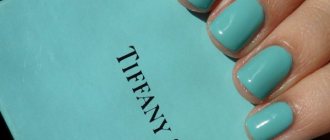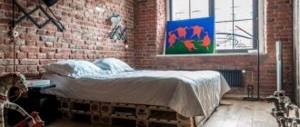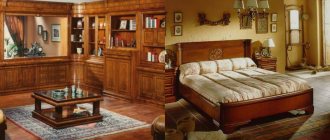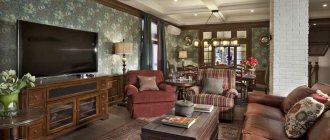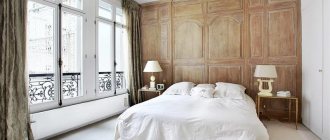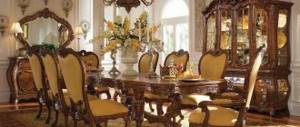The birth and formation of the art nouveau style is a complex, rapid and extremely significant phenomenon. The style lasted about 20 years, but it had a tremendous impact not only on art, architecture, design, the production of consumer items and other areas of social activity. The movement changed the consciousness of society in many countries, broke the long-term connection with previous artistic styles and was a kind of transition to a completely new one. Therefore, despite its short period of existence, art nouveau is considered not just a style or movement, but an entire era.
History of the term
The style goes by several names, since it was designated differently in different countries. The best known movement is Art Nouveau. This name appeared thanks to Siegfried Bing, who at the end of 1895 opened a Parisian store-gallery with art workshops Maison de l'Art Nouveau, which literally translates as “House of New Art”. This was not Bing's first gallery, and it featured a variety of items of artistic value on display and for sale. These included paintings, art glassware, wallpaper and fabrics, furniture, lamps, silverware, and many other things. However, they all represented exclusively new art: art nouveau, or art nouveau. The French term comes from the name of the famous gallery.
In Russia the style was known as Art Nouveau, in the United States - Tiffany. In Germany it was called “youth style,” which sounded like Jugendstil. The name was directly related to the socio-political satirical magazine Jugend. In Scotland it was known as "Glasgow style". The name was given in honor of the Scottish association of artists and designers, which significantly influenced the development of Art Nouveau in Great Britain. The Italians designated the style as “liberty”, which translated means “freedom”. But these are not all options; in every European country the Art Nouveau style had its own name.
Formation and features of the Art Nouveau style (Art Nouveau)
At first, Art Nouveau “fed” Gothic (the predominance of vertical compositions, a frequent motif of the lily as a sign of detached sophistication; the image of a thin-armed melancholic maiden, often with closed eyes).
Art Nouveau was also influenced by the Cretan-Mycenaean and Etruscan ancient cultures, and the small plastic arts of Ancient Egypt . The ornamental series borrowed elements from Celtic things (yes, Celtic “braids” are not only tattoos) and handwritten book patterns.
But. Having rejected copying, modernity carried out a synthesis, deeply comprehending the previous experience of beauty. Compare the Celtic corner design and some brooches of the jeweler Wilhelm Lucas von Cranach . These are clearly not alien images.
Penetration of Japanese “natural” style into European Art Nouveau
Just then, the Land of the Rising Sun finally reached Europe (shoutout to the Japanese artists Hokusai , Hiroshiga , and not only them), and this unexpectedly influenced the new artistic style of Europe. It’s as if a certain filter is hidden inside the Japanese artist. Reality, passing through the narrow sieve of Japanese eyes, appears as an exquisite dance -
water and flowers,
rocks and birds,
peaks in the snow and mysterious animals.
This is now Fuji, chrysanthemum, carp and crane for a European - a common artistic place. Japanese. But there was a time when the rose of Europe first gave way to the chrysanthemum - on the artist’s chest (let’s dream: in the buttonhole of his tailcoat!). Waves, streams of rain, foliage and stems of bamboo, the color of sakura, the bends of algae and schools of fish - all this was also included in the system of Art Nouveau ornaments.
History of appearance
During the 19th century, not a single new style was produced; only the reconstruction of old historical trends was carried out. Empire, neoclassicism and academicism were based on Roman-Greek ancient canons and forms, pseudo-Gothic repeated the architecture of the late Middle Ages, in France the second Rococo, the styles of Louis XV and XVI were intricately mixed, pseudo-folk style and modifications of already known trends flourished in every European country. The creators of art were tired of repeating the old, and began an active search for new forms, accents, and images.
The first architectural structure in the Art Nouveau style was built in Brussels by Victor Orga in 1893 for Professor Tassel when decorating his mansion. In England, in 1892, the novel Le Morte d'Arthur, illustrated by graphic artist Aubrey Beardsley, was published, and then he created the scenery for Salome (Wahld's play). The artist’s subtly erotic drawings caused outrage among ordinary people and a stir, but they became the standard of new art and brought Beardsley fame. In both cases, both when illustrating the novel and when decorating the mansion, the artists focused on wavy, refined lines. At the same time, the first steps in this direction were taken by Viennese and Munich artist-designers. Therefore, it is impossible to say unambiguously where the Art Nouveau style originated. It burst into European countries like a gust of fresh air from different parts of the continent simultaneously and quickly spread in this part of the world, and then became popular in the United States.
The movement reached its peak after 1900, when Art Nouveau became the dominant style at the Paris World Exhibition. Exhibits, pavilions, specially built facilities and even many technological innovations contained elements of Art Nouveau.
Art Nouveau Jewelry Artists
The pressure of high jewelry has finally broken through the wall of academic snobbery. The Society of French Artists opened an applied arts section. Personal exhibitions of jewelry artists began , catalogs began to be published in magazines, and museums began to purchase collections. The World Exhibition, held in Paris in 1900, gave the Maestro-Jeweler a standing ovation.
Rene Lalique
Among the “fathers” of Art Nouveau, one cannot fail to mention Rene Jules Lalique (as, of course, Alphonse Maria Mucha, Georges Fouquet, Charles Robert Ashby and many other masters). In just over twenty years of the Art Nouveau period, René Lalique greatly changed the foundations of the jewelry world. He introduced the motif of a naked female figure. Lalique wonderfully combined horn, mother-of-pearl, glass, and ivory with enamel and pearls, precious and ornamental stones. The king of French glass, he developed a method of injection molding (the incomparable Lalique vases). After working in the houses of Cartier and Boucheron, he opened his own jewelry workshop. Designing jewelry for Sarah Bernhardt added to the maestro's fame.
Examples of works by Art Nouveau jewelry artist Rene Lalique:
Lucien Gaillard, Alphonse Mucha, Georges Fouquet, Robert Ashby
Lucien Gaillard was also one of the most prominent jewelers of his time. His original products were more laconic, more “natural” than those of his contemporaries, and were widely known.
Examples of works by Art Nouveau jeweler Lucien Gaillard:
The products of the jeweler Georges Fouquet embodied the ideas of the famous Alphonse Mucha ; Fouquet worked according to his sketches. Alphonse Mucha and Georges Fouquet designed an Art Nouveau collection for the Paris World Exhibition in 1900. The products did not resemble traditional jewelry designs of the time, but the public was very interested. The Fouquet Room at the Exhibition was a huge success. It was a magnificent tandem, and when the time came for Georges Fouquet to open his own store, Alphonse Mucha, of course, decorated it.
Brooch by Georges Fouquet:
Examples of joint jewelry creativity by Alphonse Mucha and Georges Fouquet:
One of the representatives of modern jewelry in London was Charles Robert Ashby . His work, especially the cutlery, simply immerses you in the atmosphere of Tolkien’s film epic (elven line).
Jewelry works by Charles Ashby:
Carl Faberge: works of the Art Nouveau period
In Russia before 1917, famous artists also worked who made jewelry in the Art Nouveau style. Among them was the famous Carl Faberge:
Art Nouveau: a short but bright life
Since the beginning of the 20th century, floral modernism has been on the decline. Manifestations of this style can be found before 1914, but the form is no longer so sophisticated; smooth lines have been replaced by geometric decor. The floral flow of Art Nouveau gave way to the geometric one. Late Art Nouveau already has features of constructivism and a new style with an interesting jewelry embodiment - Art Deco.
Author: Elvira Sviridova, especially for JEWELIRUM
JEWELRY TECHNIQUES AND STYLES | Jewelry in Baroque, Rococo, Classicism and Empire style | Victorian Jewelry - Romanticism and Neostyles | Art Deco Jewelry Style | Jewelry in avant-garde styles - cubism, constructivism, abstract art, futurism and high-tech | Steampunk jewelry | Classic style in jewelry | Geometric decorations | Jewelry primitivism | Vintage jewelry
Share this article with your friends
Works by designers from the JEWELIRUM catalog
- Rings in natural style, Sergacheva Jewelery
- Earrings with pearls, Sergacheva Jewelery
- Cabochon ring, Minty Sky
- Fly earrings, Minty Sky
- Ring, Precious Park
- Ring, Precious Park
- Snake skin ring, Stoyanova Jewelery
- Chain earrings, Stoyanova Jewelery
- Children's pendant - stick, Matthew&Daniel
- Pendant for a child, Matthew&Daniel
- Bracelet, Svetlana Subbotina
- Ring with Slavic symbols, Svetlana Subbotina
- Indian style ring, Anna Goffman
- Indian style ring, Anna Goffman
- Earrings, ISTA
- Geometric ring, ISTA
- Earrings with enamel, PNJewelry
- Ring with enamel, PNJewelry
- Ring, Khramtsova Jewelry
- Ring, Khramtsova Jewelry
- Wedding rings to order, obruchalki.com
- Wedding rings to order, obruchalki.com
- Earrings, Yuri Bylkov
- Earrings, Yuri Bylkov
- Titanium bracelets, LanaMuransky
- Titanium pendant, LanaMuransky
- Brooch Elephant (after Salvador Dali), THING
- Ring Veil, THING
- Mace earrings, VLADIMIR MARKIN
- Cufflinks, jewelry mechanics, VLADIMIR MARKIN
- Drop-shaped ring, EKATERINA TOLSTAYA
- Drop-shaped earrings, EKATERINA TOLSTAYA
- Necklace with amber, LETA
- Earrings with amber, LETA
- Children's earrings, combinable, FASHBY
- Children's earrings, combinable, FASHBY
- Ring of architectural form, Elizaveta Malafeevskaya MANU_L
- Architectural bracelet, Elizaveta Malafeevskaya MANU_L
- Set Ginkgo Leaf, SHABUT JEWELLERY
- Brooch Wearable porcelain, SHABUT JEWELLERY
- Architectural ring, GEOMETRY
- Brooch, porcelain, GEOMETRY
- Necklace made of polymer clay, LICORNE ART
- Brooch made of polymer clay, LICORNE ART
- Ring, avant-garde, VALERY SEREDIN
- Bracelet, avant-garde. VALERY SEREDIN
- Wooden set, Scandinavian/Japanese minimalism, VLADIMIR SHESTAKOV
- Ring, Scandinavian/Japanese minimalism, VLADIMIR SHESTAKOV
- Earrings, TON ANT
- Ring, TON ANT
- Architectural ring, ANCHOR
- Architectural necklace, ANCHOR
- Earrings, GOHFELD JEWELLERY
- Necklace, GOHFELD JEWELLERY
- Massive ring, YAKISCHIK
- Designer jewelry, YAKISCHIK
- Architectural ring, ONE DAY ART
- Architectural ring, ONE DAY ART
- Brooch, bionics, VALERIYA MARKOVA (TESSA)
- Unclosed ring, bionics, VALERIYA MARKOVA (TESSA)
- Ring, bionics, BEAVERS
- Earrings, bionics, BEAVERS
- Earrings, asymmetry, VAGANOVA JEWELRY
- Airplane ring, VAGANOVA JEWELRY
- Flower ring, ALCHEMIA JEWELLERY
- Set, ALCHEMIA JEWELLERY
- Pendant-cat, ethnic, STUDIO OF ILYA AND VERA PALKIN
- Earrings, STUDIO OF ILYA AND VERA PALKIN
Style features
Modernism is characterized by rounded and wavy, often asymmetrical lines, natural forms, abstract, geometric, linear configurations. National creativity, the art of the countries of the Middle East, the African north, Japan, and Indonesia served as a source of ideas, which was greatly facilitated by the popularity of travel and colonial entrepreneurship. Ivory and wood from exotic trees, leather, horns and animal skins became not just a material, but also a source of inspiration for creating designs in the art nouveau style. Having absorbed and transformed various trends, national cultures and traditions of different countries, stylization, as never before, stood out as the main aesthetic method of the new style.
It was nature, with its inexhaustible wealth of ideas, that, as a rule, determined the themes and forms of works during the Art Nouveau period. Stylized shells, flowers, leaves, branches, insects, especially butterflies and dragonflies, lizards and snakes were often intertwined, combined in Art Nouveau patterns and ornaments. Then the compositions were used in completely different types of fine and applied arts, and in the design of consumer products. The craving for natural forms has not bypassed the human body as the crown of natural creation. Stylized images of beautiful half-naked women, whose bodies are not sufficiently covered, but are only emphasized by the lightest clothes, are one of the characteristic decorative elements of the style.
Art Nouveau style - manifestation in fashion and jewelry
The female silhouette of a typical representative of the Art Nouveau era snaked, reminiscent of the Latin S. Art Nouveau evening dresses became unusually impressive - due to asymmetry and mannered curved lines. Of the jewelry in the Art Nouveau era, necklaces are especially popular - necklaces with “fringe” (pearl or diamond), ideal for a wedge-shaped neckline. Wide “collars” strewn with stones came into fashion graceful hoops with a stone placed down on a long shaft. Hair was decorated with exquisite combs with gold and stones.
Jewelry art was a “beacon” of the new style. Of course, you can’t do without architectural modernism, but, as a rule, a brooch is created faster than a mansion.
Examples of antique jewelry from the Art Nouveau period:
Art Nouveau: flowers, fairies, curved lines and gems
The universe of floral (floral in French - floral) Art Nouveau - emerald lizards and snakes, motley-winged dragonflies and butterflies, sunflowers, reeds, irises and orchids...
The “marker” of Art Nouveau is a widely and whimsically curved line (in Europe called the “blow of the whip” ). It’s strange: in Japanese art, such lines depicted waves of fog, the movement of algae, and jets in a backwater;
Europeans have a scourge... Just a premonition of 1914, indeed!
Emancipation allowed the naked fairies of Lalique to multiply and inhabit jewelry. The master inspired a “golden dream” - perhaps not for all of humanity, but for an individual (rich) person. Languid female heads and figures with long hair and flexible arms in “flying” sleeves - perhaps they are the ancestors of all Disney princesses. The smooth fluidity of asymmetrical forms, the subtle construction of the composition, the combination of glossy enamels and green, lilac, blue, white, red stones - a worthy frame for a miniature lady made of gold.
And in the jewelry of real women made of flesh there are a lot of stones (pearls, opals, rubies, demantoids, amethysts, chrysoprase, mother-of-pearl). Not expensive, but decoratively and coloristically suitable gems were selected.
Principles of Art Nouveau
The style is very different from all the trends that preceded it, since it is characterized by a maximum decorative and applied orientation and is designed mainly for the production of utilitarian, household items, which, along with convenience, have extraordinary aesthetics. For the first time, art faced a difficult task: serving not wealth and power, but accessibility to the general population. The goal of most masters was to develop new aesthetic forms designed for machine production, new materials and technologies, and to involve as many spheres of human activity as possible in the field of beauty. Another feature of the period is the desire for increased comfort.
Art Nouveau appeared under the influence not only of aesthetic trends, individual artists, patrons and artists, but also public institutions, manufacturers, and publishing houses. The direction covered painting and graphics, architecture, sculpture, decorative arts, and industrial production. The style had various features that manifested themselves depending on the area of its application. In each of these areas, one can name individuals whose creations became iconic for the fleeting era of Art Nouveau.
Architecture
After the first private mansion, designed in a unified manner by Victor Orta, the idea was quickly supported in other European countries, and then in the USA. Despite the fact that many more interesting and original buildings have since been built in the Art Nouveau style, the Belgian architect remains the most outstanding personality in Art Nouveau architecture, since he is the founder of the movement.
Concrete, as a new material, and modern technologies provided more opportunities for the construction of curved forms, increasing the number of floors, the size of windows, shop windows and arches. The decor of forged metal and glass prevailed over wooden elements. The buildings have lost their classical forms and returned to the past: ancient columns and pilasters, pediments and porticos. To meet the mass demands of industrial society is the trend of modern architecture. Therefore, during the construction of residential buildings, special attention was paid to comfort, the installation of elevators and central heating. The style spread not only to residential and public buildings, but also to religious buildings, train and metro stations, bridges, shopping and industrial pavilions, urban sculpture, fences and other objects. Depending on the country and the author of the project, the external signs of modern construction differ significantly.
Interior
In hotels, restaurants, public and government institutions, and luxurious mansions, magnificent staircases were erected, the rounded shapes and fantastic interlacing of railings of which truly became works of art. The same streamlined outlines were worn by other details in the Art Nouveau interior: doors, arched openings, furniture, carved panels, wall paintings, lamps. Stained glass has become incredibly fashionable in such buildings.
When decorating the interior of residential houses of representatives of high society and the middle class, they began to use fabrics, wallpaper and carpets. Interior items are mass produced in Germany, Belgium and Austria based on sketches by commercial designers such as Joseph Hofmann, Henri Van de Velde, Richard Riemerschmid, Kolomon Moser, whose work is characterized by patterns with geometric, abstract or natural motifs in somewhat muted tones. The painting of tapestries with stylized Art Nouveau motifs has reached an unprecedented peak. From the beginning of the 1890s, Great Britain occupied a leading place in the production of wallpaper and artistic fabrics, and many of its factories produced products in a modernist style for export.
Furnishings
Furnishings varied significantly depending on the countries in which they were produced. Belgium became an important production center of this period. The Art Nouveau style was clearly revealed in the works of Victor Horta, Henri Van de Velde, and Gustave Serrurier-Bovy. Their furniture designs are less characterized by natural forms and more by curved abstract lines. Belgian furniture represented a slightly different direction. The designers who worked for the company used samples and materials from eastern countries, in particular species of exotic Indonesian trees, and successfully combined them with structural details.
There were two directions in the design of German Art Nouveau furniture: rationalistic and expressive. The rationalistic style is characterized by the use of inexpensive available materials, simplicity of forms, practicality and the desire to create samples for industrial production. For expressive products, the flora and fauna served as the standard.
Vienna's leading designers viewed furniture making as an architectural art, expressed in precise geometric shapes. In America, furniture production was still dominated by the old traditions, and Buffalo Rohlfs was one of the few designers who managed to give products natural motifs and undulating lines of Art Nouveau. The countries of Scandinavia and Central Europe formed their own traditions associated with folk art and national ornaments.
Most Parisian designers sought to revive the opulent decoration of the Rococo or Baroque style. The most important center of furniture production has traditionally been the French city of Nancy, where two companies, Louis Majorelle and Emile Galle, produced exceptional examples of furniture in the spirit of traditional forms and natural motifs.
Art Nouveau style in clothing
The new direction did not revolutionize women's fashion, for which at that time the silhouettes of the 18th century served as a model. The lack of original styles was compensated by luxurious decoration: ornaments, embroidery, braid and ribbons, folds and flounces. Narrow high collars covered women's necks all the way to the chin. The sewn-in sleeve, puffy at the shoulder, was narrow from the elbow and ended below the hand, often reaching the fingers. The long skirt, touching the floor, was shaped like a bell. Lush at the hips, it gathered at the back into folds, often turning into a short train. Thus, the female figure, pulled into a corset with overhead pillows at the lower back, in profile resembled the letter S. To balance this silhouette, large and richly decorated hats were worn slightly forward. The most respectable and expensive, but rather heavy decoration for hats were ostrich feathers.
Fashionable shoes of those years were pointed shoes or lace-up ankle boots with sloping heels in the Baroque style. Mandatory accessories - gloves and an umbrella - completed the day's outfit. Fabrics for casual wear: linen, wool, velvet in calm dark or pastel lilac, blue, pink shades.
Evening dresses, as a rule, had a deep neckline. They were made from expensive fabrics such as chiffon, crepe de Chine, muslin, satin, tulle, lace and richly decorated with embroidery. Open hands were pulled into long gloves that reached above the elbow.
Primary colors for interiors in Art Nouveau, Art Nouveau, Art Nouveau styles
The palette of interiors in the Art Nouveau style, as a rule, is not very diverse. The most common colors are shades of dark noble wood, earth, and sand. The background for them can be white and cream colors.
Some other tones may be included in the set of paints, but always natural ones - these are the colors of stones, grass, foliage. This, frankly speaking, meager but elegant palette is complemented by the color of gold, less often - bronze or silver.
Jewelry
The style manifested itself in its most refined form in jewelry. And Rene Lalique is rightfully considered the genius of Art Nouveau jewelry. He was recognized by his contemporaries as a trendsetter of Art Nouveau and a key artist of the new style. He became the author of some images, in particular, stylized insects, plants, reptiles and female figures in the form of butterflies and dragonflies, which were then adopted by illustrators and designers. He was the first to combine colored glass, horn, elephant tusk, and inexpensive stones with gold, diamonds, pearls and enamel. Lalique’s products resemble small paintings, and his “Dragonfly” chest decoration has become one of the symbols of Art Nouveau.
Tiffany style
Louis Comfort Tiffany's enterprise at one time surpassed his father's jewelry company in fame. It’s not for nothing that Art Nouveau in the United States is named after him. Tiffany Jr.'s firm and factory, Tiffany Glass and Decorating Company, designed many interiors of public buildings, hotels, restaurants, and homes of the richest people in America. However, today the name of the great artist is associated mainly with lamps and stained glass windows in the Art Nouveau style.
Glass was Louis Comfort's greatest passion, and he became interested in the art of stained glass at an early age. The best specialists worked at his enterprise. Now it is impossible to even approximately name the number of types, textures, and shades of glass that were produced at the Tiffany factory. Stained glass was mainly used to create stained glass from this rich variety of materials. Louis Comfort accomplished more of them than any of his contemporaries. Its numerous stained glass windows look like luminous paintings with fine detailing, color and shadow transitions.
For the remaining pieces of glass, a technique was invented that replicated the stained glass effect in miniature, which made it possible to create lampshades for lamps. The technology was quickly adopted by other manufacturers. However, Tiffany lamps have always been distinguished by one feature: each piece of glass, even the smallest, was not uniform, it always had a color transition or inclusions, shimmer or a special texture. As a rule, these are not transparent, but frosted and milky glasses of a wide variety of shades.
New architecture
The penetration of style into architecture led to the emergence of new construction technologies. Materials such as glass and metal, reinforced concrete, and facing ceramics are used. Structural elements are readily used - stairs, pillars, balconies, wooden beams, terraces. Roofs are made in the form of folds, bends, cracks, and shells. Walls and windows are decorated with moldings and cornices. Particular attention is drawn to the sculpting on the walls in the form of vegetation and women with flowing hair.
The Art Nouveau style in architecture is known to the world through the works of Victor Org (he was the first to apply the ideas of the style in construction). He made load-bearing structures made of iron in the form of plants, which not only attracted attention, but also caused delight.
The metro entrance pavilions familiar to us saw the world thanks to the architect Hector Guimard. Covered markets and pavilions for celebrations were built using the same principle. The style of that era was often called “metro style”.
All the buildings of that time can hardly be called man-made, they fit so harmoniously into nature.
Catering
In the USA, during this period, a new type of service was formed, which degenerated throughout the 20th century into a large-scale industry and was called catering. Art Nouveau as a style did not in any way influence this process, but it coincided with the development of a new business. An early activity in the organization of public catering establishments was started in 1820 by black Americans and carried out in Philadelphia.
The beginning of the professional development of the business dates back to the reign of Robert Bogle, recognized as the “founder of catering.” Philadelphia's second generation of black diners and convenience stores opened by 1840, when African Americans began merging such establishments with their own restaurants. The term caterer itself dates back to the 1880s, after local directories began listing numerous catering stores and eateries. It was then, during the Art Nouveau period, that catering, which had become profitable, began to pass into the hands of white entrepreneurs. By the 1930s, black establishments had virtually disappeared, and the food chain industry had become a respectable business.
The difference is in the details
Interior details are of great importance: ceiling moldings, stairs and arches, as well as accessories - lamps, paintings, table lamps. Particular attention is paid to the bizarre shapes of mirrors and huge furniture with rounded details decorated with flowers and leaves. Furniture should emphasize the main idea of the designer - reunification with nature. The works of Eugene, Galli, Louis Majorelle, and Victor Prouvé are distinguished by their originality and sensuality.
Art nouveau in the interior is a holistic composition where all elements and details complement each other. There is no flashiness or brightness, a calm atmosphere reigns around.
Sudden end
The style has not outlived its usefulness and has not gradually moved into other directions. It came to an abrupt end at the outbreak of a large-scale war in 1914 that engulfed Europe, and public interests turned in a different direction. When hostilities ended four years later, the world had changed significantly. Several of the world's largest empires ceased to exist, territorial transformations took place, and the political situation became different. But the main thing is the emergence of new materials and technologies and an increase in production capacity. The main consumer has become a significantly increased middle class. Humanity lived at different paces and aspirations. Completely different shapes and lines were required from designers to create utilitarian practical things. However, interest in Art Nouveau increased again after the 1950s and has not stopped since then, manifesting itself in various fields of art and production.
